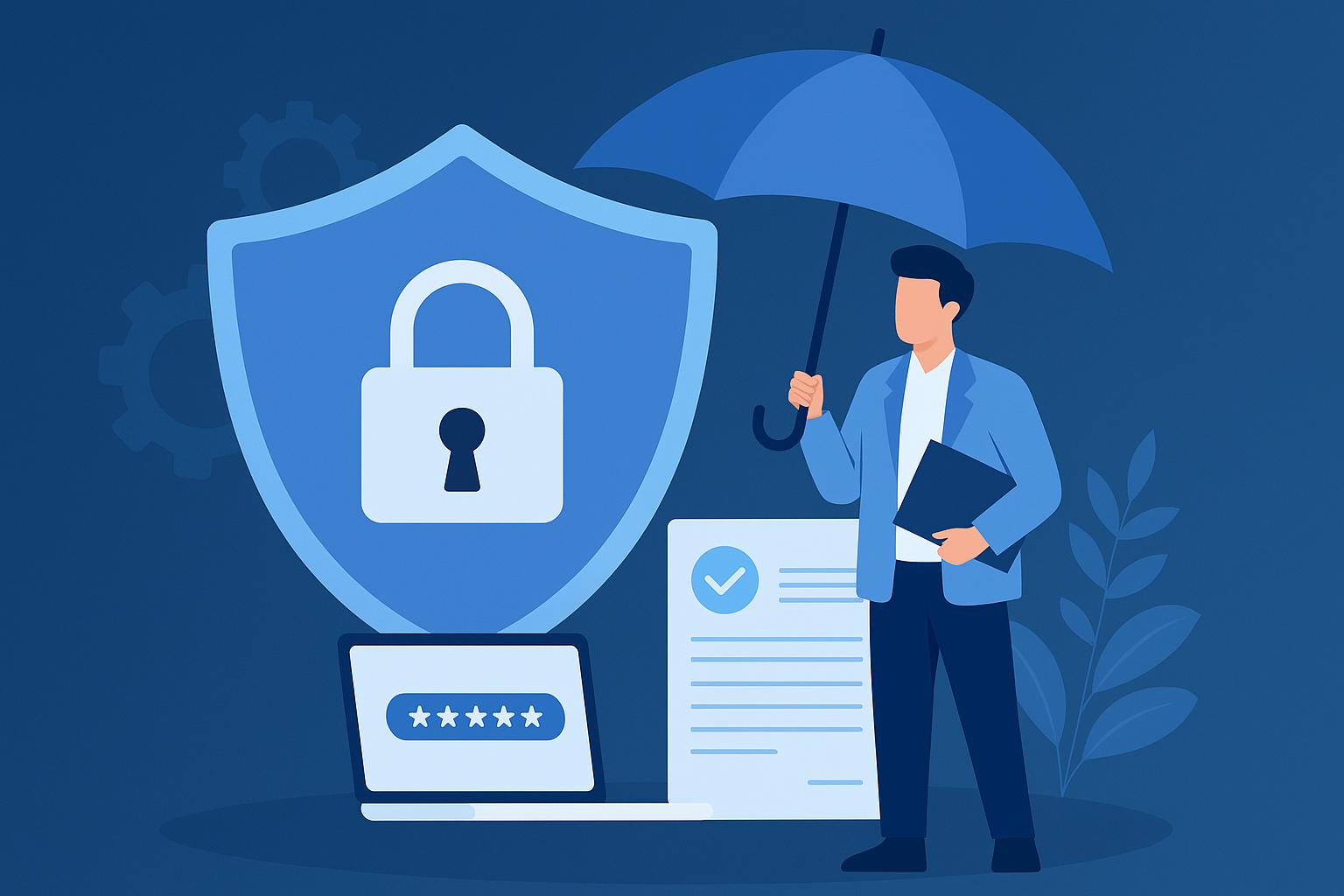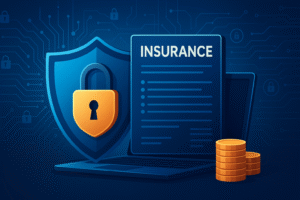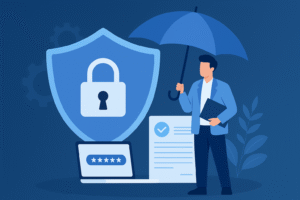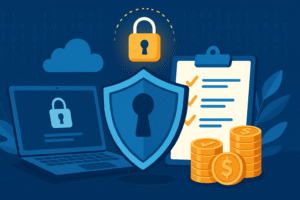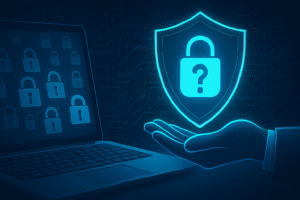Cyber Insurance Basics for Non-Tech Founders: Protect Your Business in the Digital Age
In today’s hyper-connected world, cybersecurity is no longer just a tech issue it’s a business imperative. Regardless of industry or company size, businesses face increasing digital threats such as ransomware, phishing scams, and data breaches that can disrupt operations and damage reputations. The consequences are often costly, with small businesses bearing a disproportionate share of the financial and operational impact.
The Role of Cyber Insurance in Today’s Digital World
Cyber insurance has emerged as a crucial tool to mitigate these risks, offering financial protection and support after cyber incidents occur. For non-tech founders, understanding cyber insurance basics is key to safeguarding business continuity and building trust with customers and partners. This article breaks down what cyber insurance covers, why it matters, and how to choose the right policy even if you’re not a cybersecurity expert.
1. What Is Cyber Insurance?
Definition and Purpose
Cyber insurance, sometimes called cyber liability insurance, is a specialized coverage designed to protect businesses from the financial fallout of cyberattacks and data breaches. Unlike traditional insurance policies, it specifically addresses risks related to technology, such as unauthorized access, data theft, and system failures.
The purpose of cyber insurance is to cover costs associated with incident response, legal fees, notification to affected parties, regulatory fines, and even business interruption losses. It helps businesses recover quickly and minimize the impact on operations and reputation.
Key Differences from General Business Insurance
While general business insurance might cover property damage or general liability, it often excludes cyber-related losses. Cyber insurance fills this gap by focusing on digital risks and the unique challenges they pose. For example, a fire insurance policy won’t cover a ransomware attack that locks your files cyber insurance will.
Understanding these differences helps non-tech founders recognize why a separate cyber policy is essential for comprehensive protection.
“Businesses that underestimate cyber risks risk losing everything from customer trust to financial stability.”
2. Why Non-Tech Founders Should Care
Common Misconceptions
Many non-tech founders believe that cyber threats only target large corporations or that basic IT security is enough to stay safe. These misconceptions can be dangerous. Cybercriminals often exploit vulnerabilities in small to mid-sized companies because they may lack advanced defenses or adequate insurance.
Real Risks for Every Industry
Cyber threats are universal. Whether you run a retail shop, a consultancy, or an online platform, your business stores sensitive data customer information, payment details, intellectual property that’s attractive to hackers. A single breach can trigger legal penalties, costly lawsuits, or loss of business.
According to a recent report, 43% of cyberattacks target small businesses, and 60% of those affected shut down within six months.
Cyberattack Impact on Small Businesses
Regularly discuss cyber risks with your team and consider cyber insurance an investment in your company’s longevity not just a cost.
3. Types of Cyber Insurance Coverage
First-Party Coverage
First-party coverage protects your own business from losses caused by a cyber event. This includes costs such as:
- Data restoration
- Incident response and forensic investigation
- Customer notification and credit monitoring
- Business interruption losses
This coverage is critical for minimizing downtime and managing the immediate fallout of an attack.
Third-Party Liability Coverage
Third-party liability protects you against claims from customers, partners, or regulators affected by a cyber incident. It typically covers:
- Legal defense fees
- Settlements or judgments
- Regulatory fines and penalties
- Privacy breach lawsuits
This protects your business from costly lawsuits and reputational damage.
Businesses with both first-party and third-party coverage have a stronger defense against the full spectrum of cyber risks.
Review your business’s exposure to both types of risk to choose a policy that offers balanced protection.
4. What Does Cyber Insurance Cover?
Data Breach Response
A significant part of cyber insurance is managing a data breach. Policies often include coverage for:
- Forensic analysis to identify breach sources
- Notification costs to customers or stakeholders
- Public relations efforts to manage reputation damage
- Credit monitoring services to protect affected individuals
Business Interruption and Legal Costs
Cyber incidents often cause downtime, which can cripple cash flow. Cyber insurance can compensate for lost income during business interruptions. Additionally, legal fees and settlements related to data privacy laws like GDPR or CCPA are often covered.
| Coverage Aspect | What It Covers | Why It Matters |
|---|---|---|
| Data Breach Response | Forensics, notifications, PR | Helps quickly contain and manage breach impact |
| Business Interruption | Lost income due to downtime | Keeps cash flow steady during crisis |
| Legal Costs and Fines | Defense, settlements, regulatory penalties | Protects against expensive lawsuits and fines |
Nearly 60% of businesses hit by cyberattacks experience operational disruptions lasting days or weeks.
Always clarify with your insurer how quickly claims are processed and what immediate support services are included.
5. What’s Not Covered?
Common Exclusions
Cyber insurance policies often exclude:
- Acts of war or terrorism
- Pre-existing security vulnerabilities
- Intentional fraudulent acts by employees
- Physical damage to hardware (usually covered under other policies)
Importance of Policy Fine Print
Reading the fine print is crucial. Some policies may have limits on certain types of coverage or require specific cybersecurity measures to qualify for claims. Understanding these details helps avoid unpleasant surprises during a claim.
Ask for a plain-language explanation of exclusions from your broker or insurer to ensure you fully understand your policy’s scope.
6. How to Evaluate Your Risk
Assessing Digital Assets and Vulnerabilities
Start by identifying what digital assets your business relies on databases, websites, payment systems and where the vulnerabilities lie. A clear picture of risk helps tailor your insurance needs.
Using Cyber Risk Assessments
Many insurers provide or require cyber risk assessments before issuing policies. These assessments evaluate your current security posture and suggest improvements, helping reduce premiums and improve your defenses.
Risk Assessment Matrix: Recommended Cyber Insurance Coverage
| Security Maturity \ Business Type | Retail | Consulting | Finance | Healthcare | Technology |
|---|---|---|---|---|---|
| Low Maturity |
High
High coverage recommended: $2M-5M+
|
Medium
Medium coverage recommended: $1M-2M
|
High
High coverage recommended: $3M-10M+
|
High
High coverage recommended: $5M-15M+
|
Medium
Medium coverage recommended: $1M-3M
|
| Medium Maturity |
Medium
Medium coverage recommended: $1M-2M
|
Low
Low coverage recommended: $500K-1M
|
Medium
Medium coverage recommended: $2M-5M
|
High
High coverage recommended: $3M-10M+
|
Medium
Medium coverage recommended: $1M-2M
|
| High Maturity |
Low
Low coverage recommended: $500K-1M
|
Low
Low coverage recommended: $250K-750K
|
Medium
Medium coverage recommended: $1M-3M
|
Medium
Medium coverage recommended: $2M-5M
|
Low
Low coverage recommended: $500K-1M
|
Treat risk assessments as an opportunity to strengthen your security, not just a formality to get insurance.
7. Choosing the Right Policy
Questions to Ask Your Insurer
- What types of cyber incidents does the policy cover?
- Are regulatory fines included?
- What is the claim process and timeline?
- Are there requirements for cybersecurity controls?
- How are policy limits and deductibles structured?
Tailoring Coverage to Your Business Needs
Every business is different. Customize your coverage based on industry-specific risks, size, and budget. Don’t buy a one-size-fits-all policy work with a broker who understands your business.
“A well-tailored cyber insurance policy acts like a safety net that catches you before a cyber crisis becomes a catastrophe.”
Revisit your policy annually and adjust as your business and risks evolve.
8. Cyber Insurance Costs and Factors
Premium Drivers
Premiums vary based on factors such as:
- Company size and revenue
- Industry risk profile
- Previous cyber incidents
- Security measures in place
- Coverage limits and deductibles
Tips for Cost-Effective Coverage
- Implement strong cybersecurity controls (firewalls, MFA, encryption)
- Conduct employee training regularly
- Choose appropriate coverage limits
- Bundle policies with existing business insurance
| Cost Factor | Impact on Premium | How to Manage |
|---|---|---|
| Industry Risk | Higher for finance, healthcare | Enhance security to reduce risk rating |
| Security Controls | Lower premiums with strong controls | Invest in cybersecurity best practices |
| Incident History | Past claims increase costs | Maintain clean record and document fixes |
Don’t sacrifice necessary coverage just to save a few dollars—invest smartly to protect your business’s future.
9. Regulatory & Compliance Considerations
Industry-Specific Requirements
Certain industries like healthcare, finance, and retail have strict regulations (HIPAA, PCI-DSS, GDPR) requiring data protection and breach notification. Cyber insurance helps meet these obligations.
How Insurance Helps with Compliance
Policies often cover costs related to compliance failures, such as fines or mandated notifications, reducing financial exposure while supporting regulatory adherence.
Organizations compliant with regulations tend to experience 40% fewer cyber incidents.
Use cyber insurance as part of your broader compliance strategy, not a replacement for good data governance.
10. Building a Cyber-Resilient Business
Insurance as One Part of the Strategy
Cyber insurance is not a silver bullet; it complements a strong cybersecurity posture including technology solutions, policies, and training.
Combining Tech, Training & Insurance
Invest in cybersecurity technologies, regularly train your employees on cyber hygiene, and maintain up-to-date insurance to build resilience against evolving threats.
Schedule quarterly reviews of your cybersecurity and insurance to stay ahead of new risks.
Conclusion
Cyber insurance basics are essential knowledge for every non-tech founder who wants to protect their business from the unpredictable digital landscape. It offers financial protection, peace of mind, and a critical safety net in case of cyber incidents. By understanding what cyber insurance covers, how to evaluate risks, and ways to choose the right policy, you empower your business to thrive securely.
Secure your company’s future today by exploring cyber insurance options tailored to your unique needs. Don’t wait for a cyberattack to realize the value of protection.
Frequently Asked Questions (FAQs)
Q1: Is cyber insurance only for tech companies?
No, cyber insurance benefits all businesses that use digital systems, regardless of industry or size.
Q2: Can cyber insurance cover ransomware attacks?
Yes, most policies include coverage for ransomware-related expenses such as recovery costs and ransom payments.
Q3: How much does cyber insurance cost?
Costs vary widely depending on your business size, industry, and security measures, typically ranging from a few hundred to several thousand dollars annually.
Q4: Does cyber insurance replace the need for cybersecurity measures?
No, insurance complements but does not replace strong cybersecurity controls and employee training.
Q5: How quickly can I file a claim after a cyber incident?
You should notify your insurer as soon as possible many policies have specific timelines for reporting incidents.
